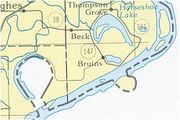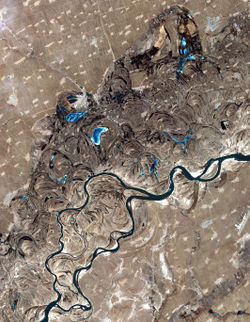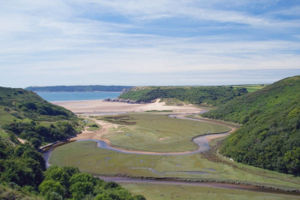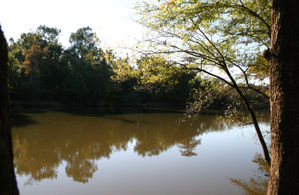Oxbow lake
2007 Schools Wikipedia Selection. Related subjects: Geology and geophysics
An oxbow lake is a type of lake which is formed when a wide meander from a stream or a river is cut off to form a lake. They are called oxbow lakes due to the distinctive curved shape that results from this process. In Australia, an oxbow lake is called a billabong.
Formation

The bulges in the border reflect changes in the course of the river; when the river shifted its course and cut off the former channel, the border did not change.
When a river reaches a low-lying plain in its final course to the sea or a lake, it meanders widely. Deposition occurs on the convex bank because of the ‘slack water’, or water at low velocity. In contrast, both lateral erosion and undercutting occur on the concave bank where the stream’s velocity is the highest. Continuous erosion of a concave bank and deposition on the convex bank of a meandering river cause the formation of a very pronounced meander with two concave banks getting closer. The narrow neck of land between the two neighbouring concave banks is finally cut through, either by lateral erosion of the two concave banks or by the strong currents of a flood. When this happens, a new straighter river channel is created and an abandoned meander loop, called a cut-off, is formed. When deposition finally seals off the cut-off from the river channel, an oxbow lake is formed.
Some rivers shift in this way on a time scale from a few years to several decades whereas others are essentially static.
Examples
The Reelfoot Lake in west Tennessee is an oxbow lake formed when the Mississippi River changed course following the New Madrid Earthquake of 1811– 1812. There are many oxbow lakes alongside the Mississippi River and its tributaries. The largest oxbow lake in North America, Lake Chicot (located near Lake Village, Arkansas), was originally part of the Arkansas River.
Cuckmere Haven in Sussex, England contains a widely meandering river with many oxbow lakes, often referred to in physical geography textbooks.


